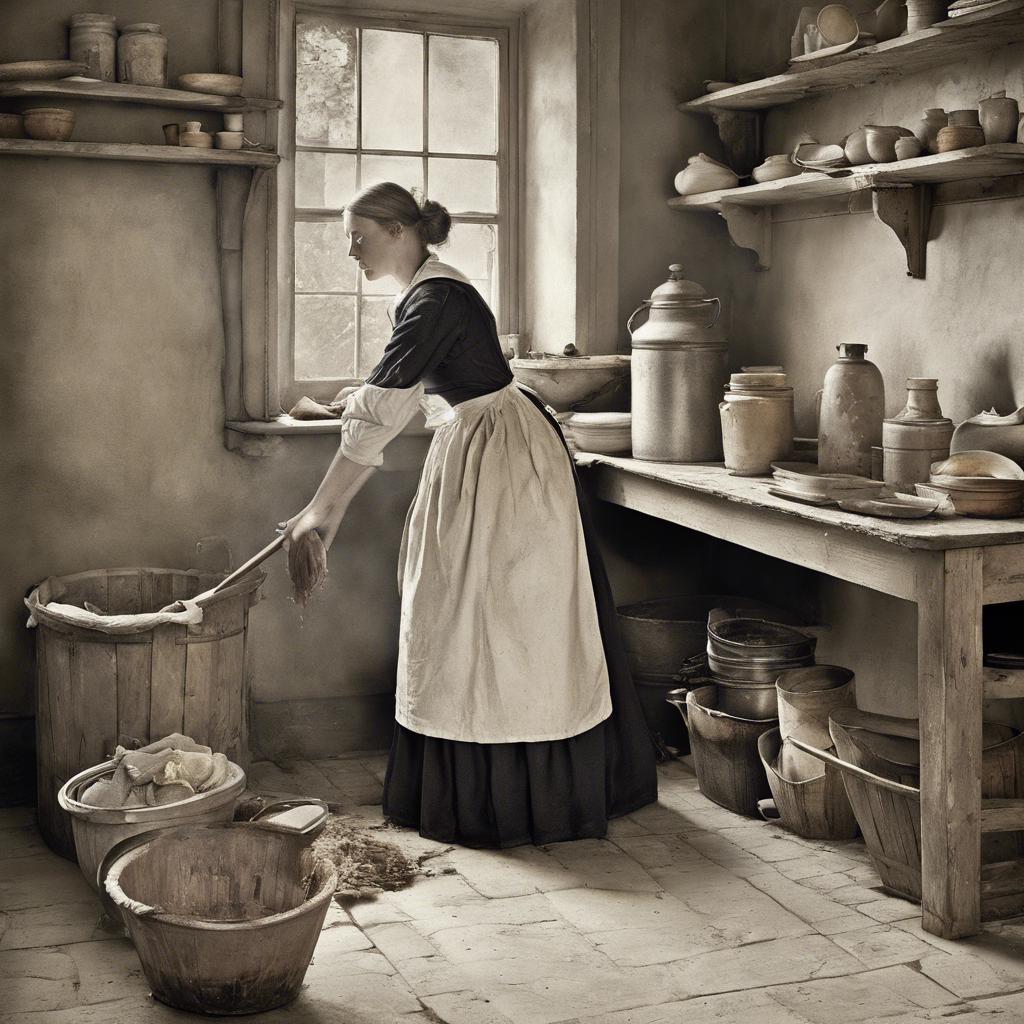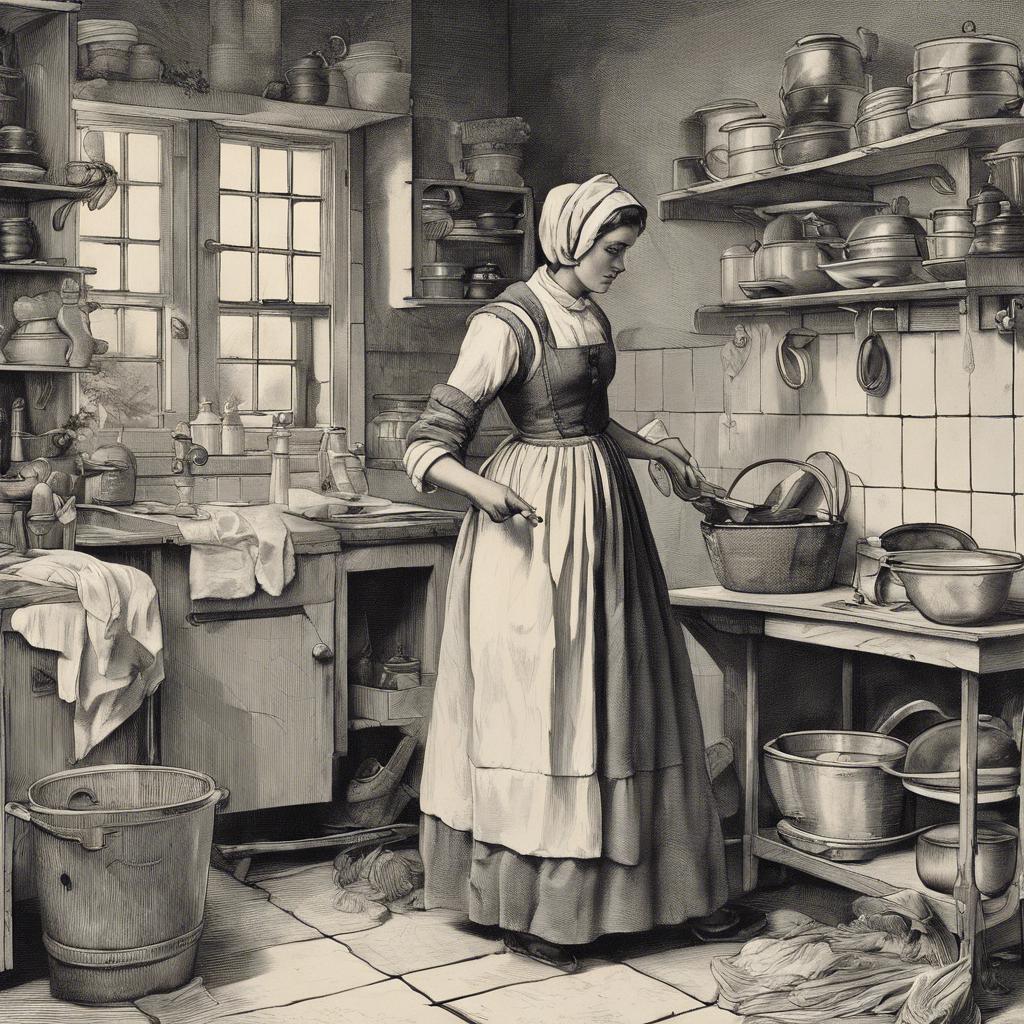In the grand estates of yesteryear, amidst the opulence and splendor of the upper echelons of society, there existed a class of workers who toiled tirelessly behind the scenes to ensure the smooth functioning of the household. Among them, the scullery maid held a pivotal role, her duties encompassing the maintenance of the kitchen and its utensils, and the preparation of meals for the esteemed residents and their guests. In this article, we delve into the definition and significance of the scullery maid in historical contexts, shedding light on her indispensable contributions to the smooth running of grand households.
Step Into the World of Cheryl Bolen
Dive into the enchanting stories of love, intrigue, and elegance set in the Regency Era. Cheryl Bolen's novels offer timeless romance and captivating tales that will leave you wanting more.
Explore Cheryl Bolen's Books Now
Scullery Maid: Historical Role and Responsibilities
Scullery maids were an essential part of the historical household staff, playing a crucial role in maintaining the cleanliness and order of the kitchen. Their responsibilities were often physically demanding and required attention to detail. Some of the common tasks performed by scullery maids included:
- Scrubbing pots, pans, and dishes
- Cleaning kitchen surfaces
- Emptying and cleaning chamber pots
- Assisting with food preparation
Despite the hard work and long hours, scullery maids were generally considered to be the lowest-ranking members of the household staff hierarchy. They were often young girls from poor backgrounds who worked for low wages and lived in basic accommodations provided by their employers. Despite their low status, scullery maids played a vital role in maintaining the smooth running of the household.
| Fact | Description |
|---|---|
| Uniform | Scullery maids typically wore plain, functional clothing that could withstand the rigors of their work. |
| Hours | Scullery maids often worked long hours, starting early in the morning and finishing late at night. |
Understanding the Duties and Tasks of a Scullery Maid
In historical households, a scullery maid was an essential member of the domestic staff responsible for maintaining the cleanliness of the kitchen and dining areas. Their duties ranged from washing dishes and utensils to cleaning cookware and scrubbing floors. The role of a scullery maid required physical stamina and attention to detail to ensure that the kitchen remained organized and hygienic.
One of the primary tasks of a scullery maid was to hand wash dishes and utensils after meals. This was a labor-intensive job that involved scrubbing away food residue and grease to ensure that each item was thoroughly cleaned. In addition to dishwashing, a scullery maid also had to clean and polish cookware, such as pots and pans, to maintain their appearance and functionality.
Aside from dishwashing and cookware cleaning, a scullery maid was often responsible for mopping and scrubbing the kitchen floors. This task required the use of hot water, soap, and elbow grease to remove dirt and grime that accumulated throughout the day. Keeping the kitchen floors clean was essential to prevent the spread of germs and maintain a sanitary environment for food preparation.
The Evolution of the Scullery Maid Position
Throughout history, the role of the scullery maid has evolved significantly, reflecting changes in social structure and technological advancements. Originally, the scullery maid was responsible for washing and scrubbing cooking utensils and dishes in a large household. This position was often held by young girls or women from lower socioeconomic backgrounds.
As time progressed, the responsibilities of the scullery maid expanded to include cleaning other areas of the kitchen, such as the floors and stoves. With the introduction of more modern kitchen appliances and plumbing systems, the workload of the scullery maid became more manageable, allowing for additional tasks to be taken on.
In the present day, the role of the scullery maid has largely disappeared, as modern homes and commercial kitchens are equipped with dishwashers and other labor-saving devices. However, the legacy of the scullery maid lives on in the form of professional kitchen staff who perform similar tasks in restaurants and catering establishments.
Tips for Reenactment and Historical Interpretation as a Scullery Maid
In the world of reenactment and historical interpretation, embodying the role of a scullery maid can offer a unique perspective into the daily life of the lower classes during different historical periods. As a scullery maid, your main duties would include washing dishes, cleaning kitchen utensils, and maintaining the cleanliness of the kitchen area in a grand estate or manor house.
To truly immerse yourself in the role of a scullery maid, it is essential to pay attention to historical accuracy and detail. Researching the specific time period, social dynamics, and overall lifestyle of the era you are portraying can help you understand the nuances of being a scullery maid and enhance your performance. Additionally, learning about traditional cooking techniques, utensils, and cleaning methods of the time can add authenticity to your portrayal.
When participating in reenactments or historical interpretations as a scullery maid, remember to stay in character at all times. Practice proper posture, speech, and mannerisms that align with the social hierarchy and expectations of a maid in that particular era. Embrace the hard work and challenges that come with the role, and showcase the resilience and resourcefulness required to thrive as a scullery maid in a historical setting.
In Conclusion
the scullery maid played a vital role in the smooth operation of a wealthy household during the Victorian era. Their hard work and dedication were crucial in maintaining the cleanliness and efficiency of the kitchen and dining areas. Despite the demanding nature of their job, scullery maids were an integral part of the domestic staff hierarchy and contributed greatly to the running of the household. Their legacy lives on in the rich history of domestic service, serving as a reminder of the unsung heroes who worked tirelessly behind the scenes to ensure the comfort and well-being of their employers.


